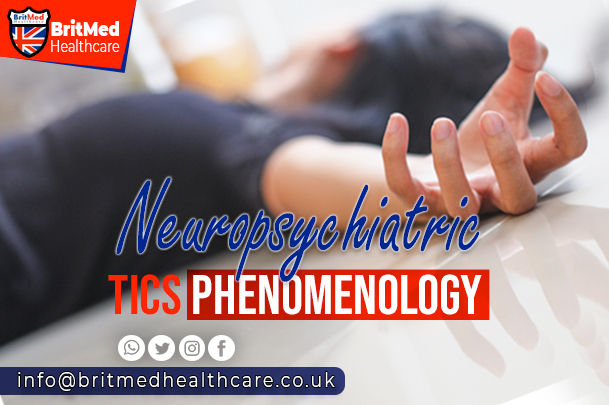Review of Current Understanding of Neuropsychiatric Tics Phenomenology
Neuropsychiatric tics are one of the most complex and multifaceted phenomena since they occur across a broad spectrum of neurological and psychiatric disorders. Despite their frequency, tics have only partially been understood so far, while their underlying mechanisms and correlates form the subject of continuous research. This article will extensively review neuropsychiatric tics in relation to their phenomenology, clinical presentation, and basic pathophysiology.
Introduction:
Tics are a wide range of involuntary movements or vocalizations, which may happen in any person under various neurological and psychiatric disorders. Common examples include Tourette’s syndrome, obsessive-compulsive disorder, and autism spectrum disorder. Neuropsychiatric tics can be identified by their sudden nature, usually due to specific stimuli or emotions, and the tendency over time to wax and wane in their intensity. Despite the fact that they do not lead to grave outcomes, tics can significantly affect an individual’s quality of life and lead to complete social withdrawal, anxiety, and depression.
Phenomenology of Neuropsychiatric Tics:
Tics are variable in form: motor tics-they are sudden, brief head, face, and limb movements, such as eye blinking, stretching of the neck, or jerking of arms. Vocal tics are sudden, involuntary, meaningless sounds or words, such as clearing the throat, grunting, or saying partial words or sentences repeatedly. Complex tics are composed of different elements, including motor and vocal tics, or more intricate movements, like facial grimacing or purposeless gesturing.
Clinical Presentation of Neuropsychiatric Tics:
The nature of the underlying disorder drives the manifestation of tics. For instance, in Tourette’s syndrome, tics typically begin in childhood and tend to increase progressively over time. However, in obsessive-compulsive disorder, the tics may be much subtler with repetitive movements or vocalizations serving as a reaction to specific stimuli or emotions.
Pathophysiology of Neuropsychiatric Tics:
The exact underlying mechanisms of neuropsychiatric tics have not been fully explained. However, all these research studies imply that they are related to abnormal activity of the regions responsible for motor regulation, emotional functions, and cognition. For example, it has been discovered that in individuals with Tourette syndrome, activities of the region like the basal ganglia, thalamus, and frontal cortex have been changed. Further, fMRI has shown abnormalities in the default mode network involved in mind-wandering and reflection of self.
Conclusion:
Neuropsychiatric tics are a rather complex and multilevel pathophysiological phenomenon seen in neurological and psychiatric disorders, often of many different genesis levels. Although our understanding of the underlying mechanisms is still evolving, research alludes to abnormalities within brain regions implicated in the control of movement, the regulation of emotion, and cognitive processing. Further research is thus clearly necessary to establish the precise pathophysiological processes that can explain neuropsychiatric tics and to find effective treatment for these devastating conditions.
References:
The Neuropsychiatric Approach to the Assessment of Patients in Neurology – PMC (nih.gov)
An Update on the Diagnosis and Management of Tic Disorders – PMC (nih.gov)
Websites:
Britmed Healthcare: https://britmedhealthcare.co.uk/
Nightingale Hospital: https://www.nightingalehospital.co.uk/
You can also book on Top Doctors UK Contact us on WhatsApp 08009708017
Top Doctors: https://www.topdoctors.co.uk/doctor/ahmed-el-missiry




